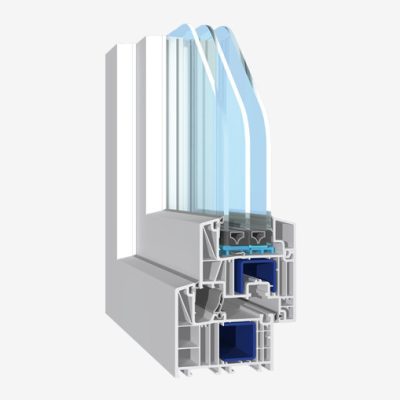When choosing a front door, we usually look for three important features. First and foremost, good thermal insulation, soundproofing and effective burglary protection. Only then do we consider the style and colour of the door, so that it fits in with the planned design. The material the door is made of is also important.
Advantages of PVC doors
When choosing doors for our home, we pay the most attention to external doors, whether balcony or entrance doors, due to their indispensable features. So do PVC exterior doors have the required thermal insulation and durability properties and how do they compare to other products on the market? It turns out that modern PVC doors often outperform products made of other materials. It is also worth adding that they tolerate the harmful effects of atmospheric factors very well, and thanks to the use of profiles with a high class of surface smoothness, they are easy to keep clean (dirt does not stick to the surface, and water runs off it). They are also maintenance-free, unlike wooden doors, which need to be painted every few years to protect them from moisture.
Modernity and safety
In the production of PVC doors, a modern composite material reinforced with fibreglass, based on PVC and ALU, is often used, which significantly increases their durability, structural stability and reduces heat loss. What is more, doors made with the latest technologies are characterised by excellent burglar resistance (up to RC 2) or higher, with the use of steel reinforcements and weldable connectors to increase their static properties. It is also important that modern constructions have a low threshold of up to 20 mm.
Read also:
Environment
Sometimes, people claim that PVC joinery is not safe and environmentally friendly. This is usually due to a lack of knowledge. Ready-made PVC windows and doors are completely safe for the health of people and animals in everyday use, and harmful substances can only be released in the event of a fire. It is also worth noting that PVC is recyclable and PVC doors and windows are, firstly, energy-efficient (i.e. they reduce energy loss) and, secondly, durable (so they do not need to be replaced quickly).
Economical design
One of the biggest advantages of PVC joinery is its relatively low price, while maintaining good quality compared to aluminium or wooden joinery. They also do not require specialised care and are easy to clean. Another advantage of PVC windows and doors is the huge design possibilities in a wide range of colours. They can also successfully imitate the colour and texture of wood.
Disadvantages of PVC doors
Unfortunately, PVC doors have many advantages but also disadvantages that can be a serious obstacle and discourage people from buying them.
The main disadvantages of doors made of polyvinyl chloride are the low level of rigidity of the door frame and door leaf, which reduces the anti-burglary properties, which is particularly important for entrance doors. For this reason, PVC is also not a good choice for the production of very large glazing or facades. In such solutions, aluminium or wood are better suited.
Read also:



